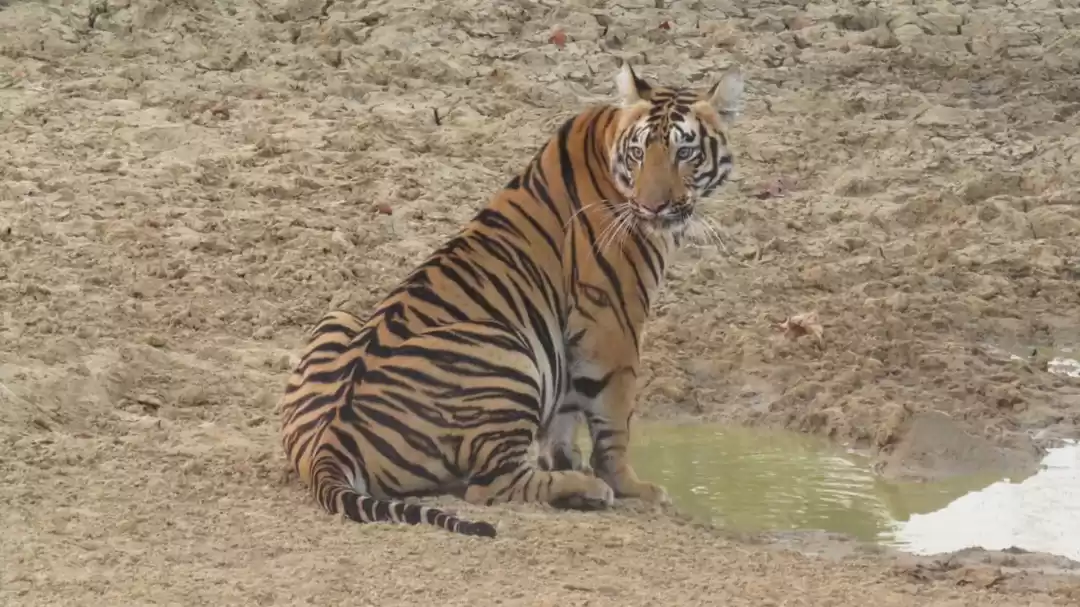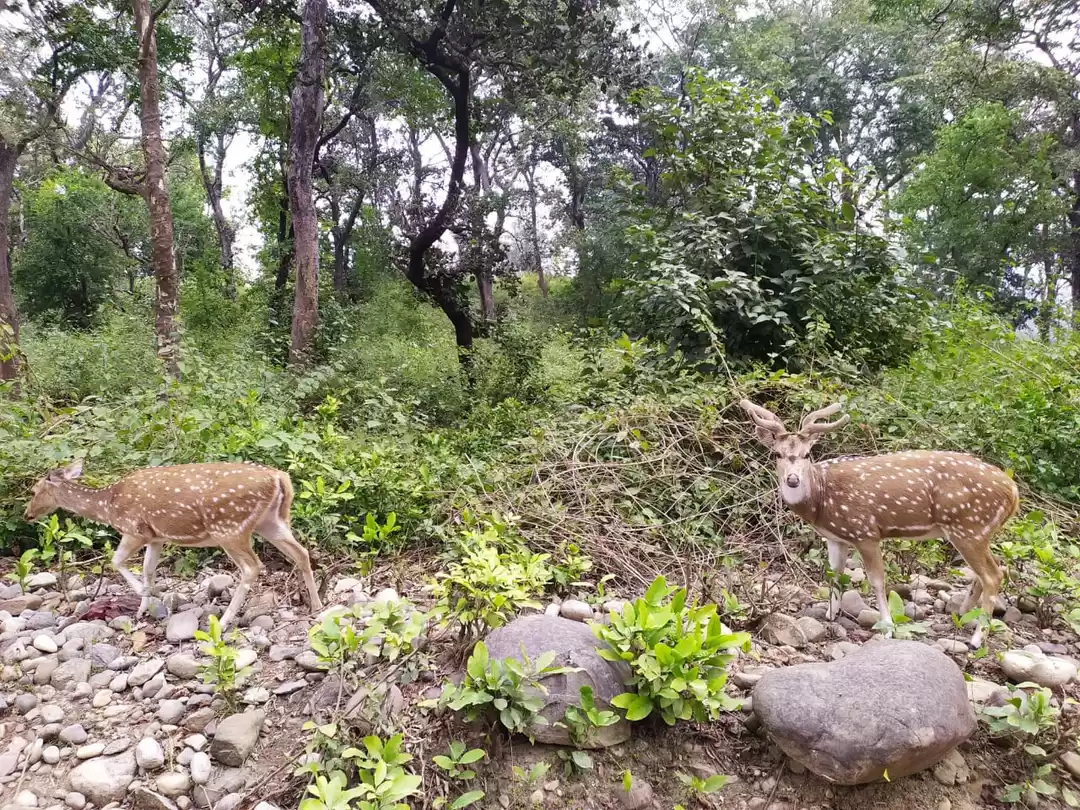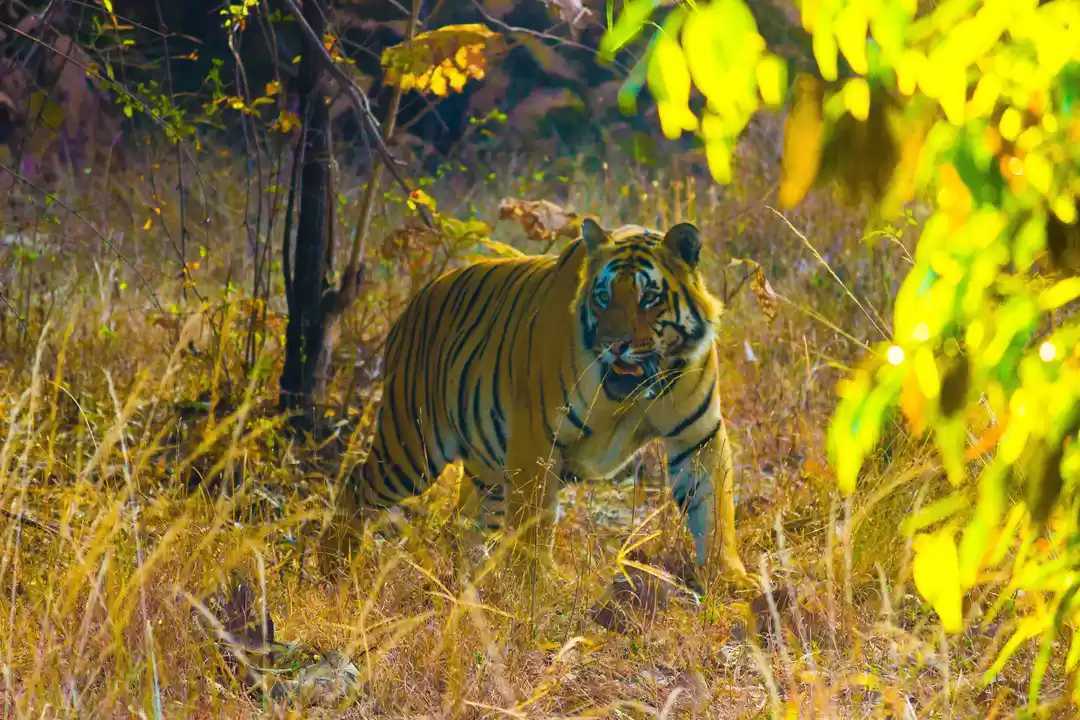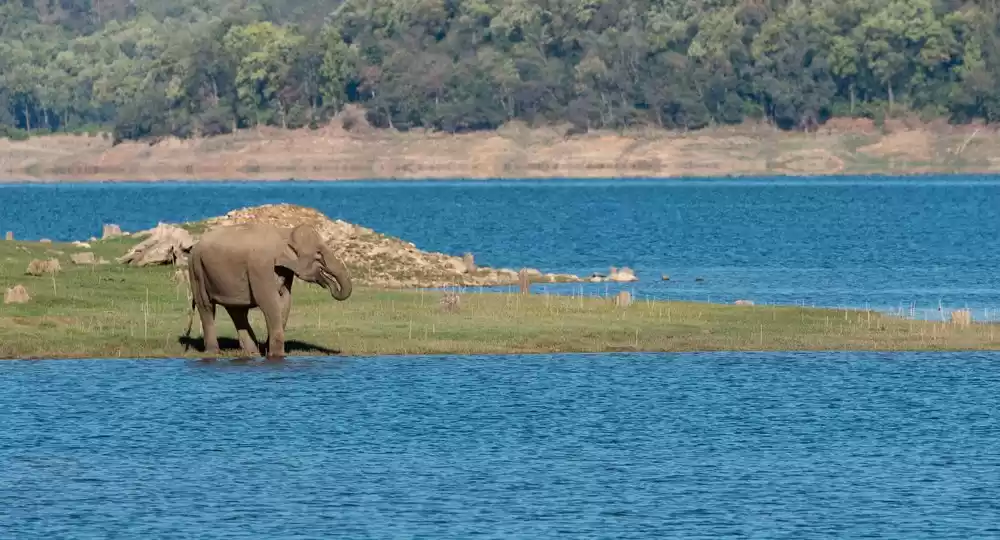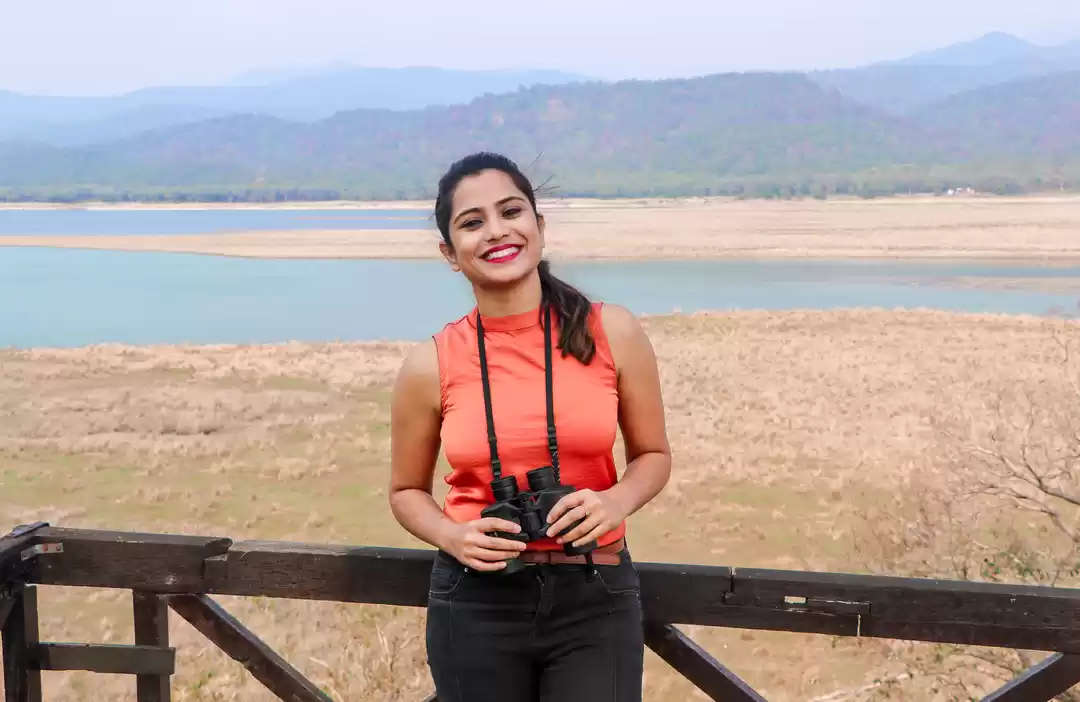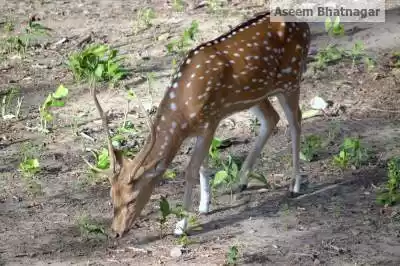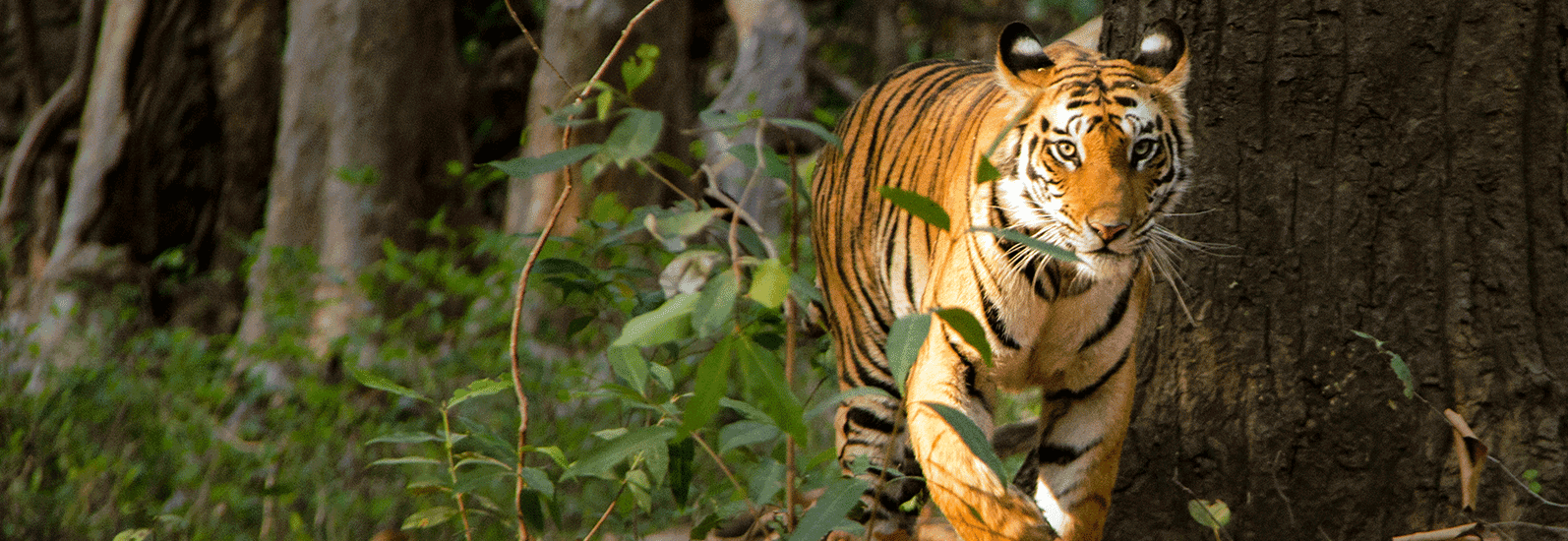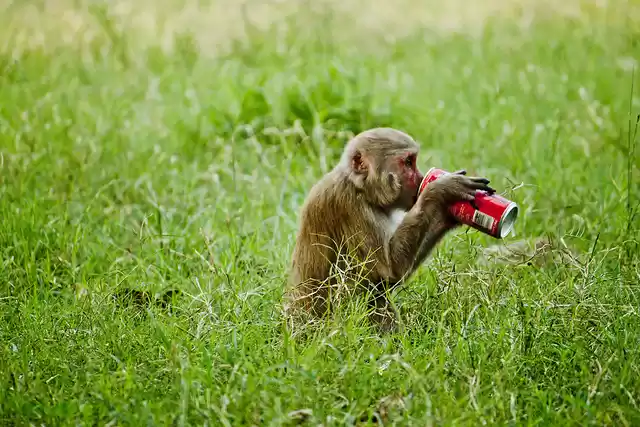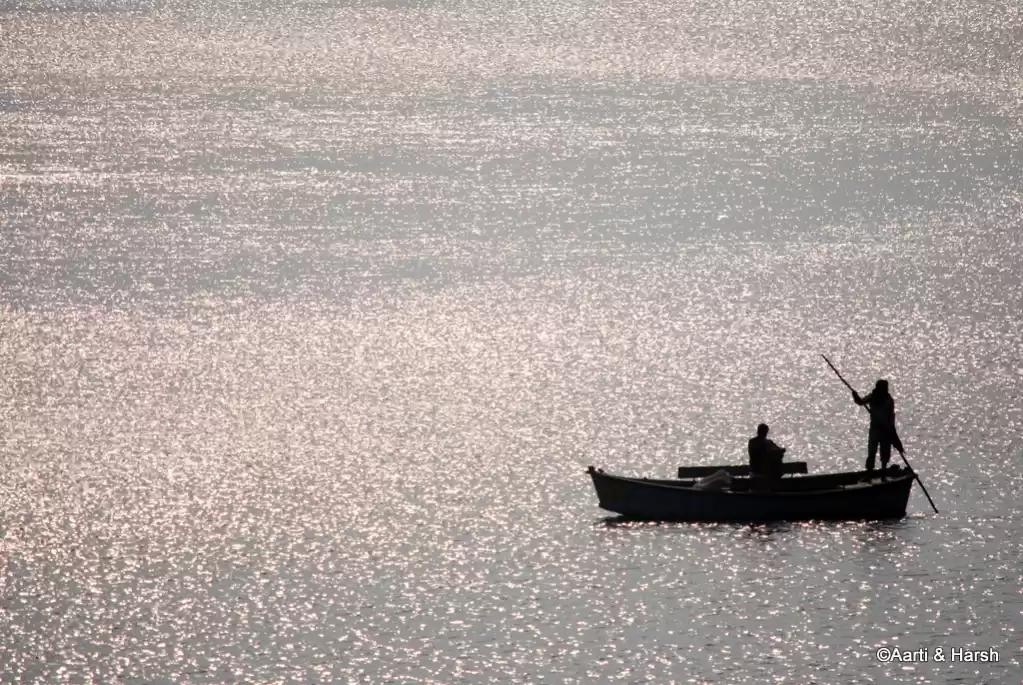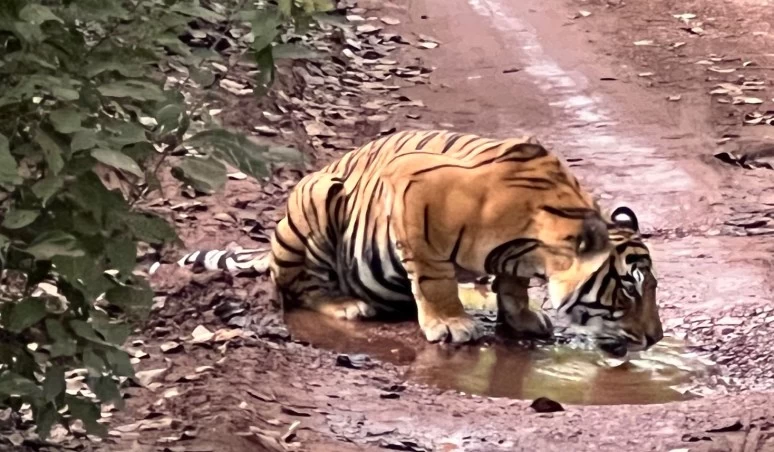
Wildlife has been of a great personal importance for me in my life. Since my childhood, I had always been fascinated by the animals, birds which would meet my eyes and captivate me completely. Be it a squirrel scurrying up and down a tree, or a Golden Oriole Bird(Oriolus kundoo) chirping on a branch above me, or off course, a Majestic Bengal Tiger (Panthera tigris tigris) walking back and forth in its allotted safari enclosures, it would all make me stop in my tracks and contemplate their beauty and grandeur. Naturally, I had been quite inclined to stories about the beautiful and mysterious elements of Indian Wildlife. But none of the stories could captivate me as much as the adventures and tales of one man, a man whom I consider as an idol for my fascination to wildlife. Jim Corbett. The tales of Corbett had been my favourite since a time immemorial and his brave adventures of tracking and facing the Man-eating beasts of Northern Indian, mostly the Garwal Region made me crave to visit the place which is a memorial to Corbett. The Corbett National Park, earlier known as Hailey National Park, lies in the area of Nainital and Garwal district of Uttarakhand and is the oldest National Park, aimed at protection of the endangered Bengal Tiger. With my greatest focus in Wildlife Science being the Tiger Ecology and its deeper study, I had made up my mind this year, in the month of November to visit this beautiful abode in my country, a venture and experience that I will always carry in my heart and which I'm very eager to share with the readers of this article in the next few paragraphs.
Reaching the park has become convenient since the past years due to the heavy inflow of tourists. The railway station of Ramnagar is the closest to the park. The Ramnagar Railway station is well connected with Delhi. I had chosen the direct train, Ranikhet Express which operates on all days between the National Capital to Ramnagar. The express departs at around 11.00 pm from Delhi and arrives at Ramnagar at around 4.30 am in the Morning. The Corbett National Park is divided into several regions or zone, which include the Dhikala Zone, which is the most premium zone of safari and greatest chances of sighting Tigers, along with the Bijrani Zone, Sitabani Zone, Dhela Zone, Jhirna Zone and the Durga Devi zone. The Dhikala Zone operates safaris only between mid-November to mid-June, while rest of the time it is closed. Hence as the most premium zone of the Park was closed during the time of my visit, I had to opt for the Bijrani Zone as my point of entry into the park. Bijrani Zone, is the most sought after zone after Dhikala as the chances of spotting the Tiger is as similar as the Dhikala Zone. Also, A permit is required, which is compulsory to enter the zone ( or any other zones of the park for that matter ), which can either be pre-booked online or can be obtained from the forest office in the town of Ramnagar. Also, it is needless to say that to enter the park a safari jeep needs to be hired (Elephant safari is another option though) along with a guide/naturist. So when entering the park, the jeep can hold 6 person along with the driver and the guide. When booked online, it is approximately INR 4500/- which will include the driver fees, guide fees, permit fees and service charge. The price for foreign national increases to INR 7500/- for the safari. I had booked all these necessities a month earlier and I highly suggest the visitors to do so as well because the safari is subject to availability as only a maximum number of 30 jeeps is allowed per day inside the park zones. Bijrani Zone can be accessed by the Amdanda gate, which is at a distance of around 1 km from Ramnagar Town.

The jeep which I had pre-booked arrived to pick me up from my lodge which was around a half km from the park gate, at around 6.00 am in the morning. The Driver Mr. Rakesh was a very friendly and courteous person who first introduced himself and explained me the visit plan. After a very quick breakfast, we drove towards the gate. Arriving at the gate, after security checks and clearing the permit formalities, another person boarded the jeep. Mr. Singh introduced himself as the guide of the day. He spoke very slowly and explained every detail of the forest, its outskirts and the people who inhabited the borders leading to the forest, as Rakesh drove us towards the forest. It is quite correct to mention that there lies a buffer zone of around 5 kms between the gate and the forest's core zone. As we drove I couldn't help but silently appreciate the beauty of the landscape and the hills of the Garwal ranges which surrounded us. The forest was primarily of Sal trees (Shorea robusta). Along the way I could also recognize few Jamun trees (Syzgium cumini) as well. The buffer zone was a incredible display of occasional grasslands, partially dried, rocky riverbeds, and canopy of sal trees behind it highlighting the beautiful and dense forest. It was an incredible journey, as Mr. Singh explained the flora and fauna of the forest, and indicated as we drove inside the core area of the forest.

I held my breath as we drove through the dense jungle path, through the heavy canopy of Sal trees. The streaks of sunlight stole through the dense tree leaves and gave a beautiful light effect on the forest floor. Trees were alive with activity. Here and there, the tree branches moved and swayed as curious Indian Langurs (Semnopithecus entellus) peered towards us and hopped from one branch to other, making unmistakable vocal sounds. It amazed me to see how these primates used their amazingly long and prehensile tail as a third "arm" to hang on to tree branches and swiftly move from one tree to another. Other than Langurs, the trees were adorned with birds of different kinds. Their chirping filled the atmosphere. When the jeep slowed down to take a turn in the forest clearing I found a bird resting on a thin branch twig, and as the jeep was moving slow, I had enough time to capture it on my camera. I later identified the bird to be an Indian Brown Rock Chat (Oenanthe fusca). Just as I took the click the jeep took the turning and then picked up speed again, and continued on its cruise through the forest. Soon the path opened into a clearing where there was another rocky bed with a little water, just like the one in the buffer zone. just as we crossed the clearing and was heading inside the forest canopy again, Mr. Singh suddenly asked Rakesh to stop the jeep. He then drew my attention and pointed his finger to a large rock by the side of the rock bed, around 30-35 meters away from the jeep. A huge Indian rock Python (Python molurus) lay by the side of the rock resting with its head spitting out its forked teeth. I wanted to get a good picture of it, so with the supervision of Mr. Singh I climbed down the jeep carefully and got a nice click of the python before it started slithering away, probably because it was disturbed by the presence of humans. We resumed our cruise through the forest. Not long we came through a small water hole which had a very marshy water, and although not a very common sight in the zone, and in that time of the year, we had our eyes on a massive, fully grown Indian Mugger, or Indian Marsh Crocodile (Crocodylus palustris). It was gently basking in on the muddy bank of the small water hole, it's eyes fixated and lying very still as if lifeless. Mr. Singh said I was a lucky person to have sighted the Mugger in the Bijrani Zone and that too in November. It was indeed a extraordinary turn of events and I smiled to myself and my eyes lingered on the still, as if dead, mugger as our jeep proceeded forward.



As our jeep made its way through the forests, amazed as I was with the beauty and mysterious aura of the forest, I could not stop myself from the yearning to see the creature, for which I have traveled all the way to Corbett National Park. But try hard as I might, I could not stop thinking and craving to come across the Striped Gentlemen of the Forest. Yes, I call the Tiger as the "Gentlemen of the Forest". All these years of study on different animals, I probably have not seen a creature more majestic yet humble, silent yet fierce than the Tiger. The tiger abides to the law of the Jungle, its movement as gracious as it's fiery eyes. I have come to respect this amazing creature and definitely a Pride of Indian subcontinent. When I could not contain my yearning anymore, I finally asked Mr. Singh, when and if I will even be able to sight a tiger. To my amazement he told me, that the Tiger is not like other animals, it is elusive and a master of camouflage. And in the winter season, sighting a tiger is not as easy as that of summer season. I was about to show my discontent, but I realized that Mr. Singh was speaking the truth. After all, this is a forest, we cannot make the residents come before us as we wish. But I could not stop feeling a strange discontent for I was at that point unsure if I could sight a Tiger. Anyways we kept on driving though the forest. We came across numerous other fauna of the park, including a couple of spotted deer or Chital (Axis axis). But we still could not sight a Tiger. At one point, Mr. Singh had ordered Rakesh to stop the jeep near a forest clearing. On right of us, there was a dilapidated watch tower and in front of us, facing the tower was a great patch of grassland with sal tree forest on the landscape behind. The view helped me forget the fact that we have not sighted a Tiger yet, for a short moment. Soon we climbed back in the jeep and we descended right into the grassland. As the jeep proceeded, I felt Mr. Singh's behavior and facial expression change suddenly. He had suddenly turned silent and his eyes were darting all along the two sides of the grassy surroundings. He also asked Rakesh to drive more gently and slower. The jeep in fact was now moving like a paper boat floating slowly down a stream of water. As we drove through the grasses, we came upon a path along the grassy route. We continued through the path. About two or three minutes later I saw, on the left side we had a patch of long grasses in which a huge sized Sambhar deer was grazing on grass, and on the right a short patch of grass followed by a thick slope of bushes which led into the forest path. At this point, I felt something. A kind of presence. And to my surprise even Mr. Singh had asked the jeep to stop after it had crossed half of the path. Two years of studying Animal behavior had taught me a enough about reading the expressions and behaviour of animals. The area suddenly seemed very quiet. Me and Mr. Singh we looked at each other. I looked back towards the deer that was grazing. It had stopped grazing and was standing without movement its eyes fixed on a single direction towards the thick bushy slope which lead to the forest. Suddenly it let out a very high pitched and distinct call. It was not an ordinary call, I knew this, even before Mr. Singh confirmed my thoughts. It was alarm call, sounds a deer makes when it senses a predator nearby. Just its ears was moving, like a radar, scanning for any sound or movement. This was the most obvious signs of the presence of a predator, can be read from animals like deer. There was a predator nearby, maybe a leopard or a Tiger. God knew, with bated breath I was fervently wishing for a tiger to stroll along our path. I looked at the direction towards which the deer’s eyes was fixated, without even blinking, such was the suspense and heat of the moment. My fingers were pressed almost half way through the shutter button of my camera, ready for a shot. I peered and scanned the bushes. I could find nothing. Suddenly something, a movement caught the corner of my eye. I could not see anything yet, but that movement had caught my eye. Since the movement came from a spot which was quite far away from my position, about 350-450 meters, I pointed my camera and took several shots in that direction. And then I finally saw the majestic beast. Although just for a split second. It was a Tigress, with it head turned and fixed just into mine. I could not help myself but keep looking at those eyes. And it was just my luck that, the tigress was not alone. There were three cubs along with her, as I later realized when I cleared and checked those uncertain shots I had taken when I saw the movements. And then she vanished along with the cubs. Just a matter of seconds, but I instantly considered the entire trip to be successful. I realized how just a few seconds of sighting had a immediate positive effect on my journey. I had come all the way to Corbett national park just for these few moments. We waited for a few moments before resuming our drive. I kept smiling to myself while Mr. Singh and Rakesh both spoke joyously, obviously because they have been successfully able to meet their guest's wishes.






As we drove out of the clearing, we entered the forest path again. It was around 4:00 pm in the evening that point of time. Mr. Singh suggested we start heading back, as it would still take some time to exit the forest and sunset was approaching swiftly. It is a very bad idea to get trapped in any forest after sunset. And the regulations of the park too forbid any venture inside the park after sunset. So we started our return journey. We crossed many more clearings and beds of rocks, waterholes. The forest canopy still had many wonders, as we slowly inched back towards the buffer zone. At one part of the forest, I could see a lot of Chitals grazing and some drinking water from small streams of water. They scurried off as our jeep crossed them. They are really shy, but curious animals, I assumed. Although the forest was much thinner now, yet I felt like that somewhere there was a tiger around us. The feeling never left me. Mr. Singh showed me some most obvious signs of the tiger, like several pawprints lying all around the forest floor. I was never so thrilled and excited. While we drove on, I just could not keep admiring the beautiful forest and its resident creatures. The place had so much beauty. Just on the periphery of the Forest and the buffer zone, was a huge banyan tree (Ficus benghalensis). I was just looking for a perfect angle to click a good photograph of the huge tree when I suddenly noticed something perched on one of its huge branches. It was bird, a Bird of Prey. I clicked some pictures of it, before it spread its magnificent and huge wings before flying away. Later after consulting a field guide in Ornithology, I found out that it was actually a Hawk-Eagle (Nisaetus cirrhatus). I could not believe my luck, or was it God's will, I really don't know, but I had experienced wildlife and its glamour in the right sense and amount. As we drove past the buffer zone towards the human habitation, the exit from the park premises, I closed my eyes and let the wind kiss my face and I let the views of what I saw today, the Langurs, the birds, the deer, the tigress and the cubs, all float in front of my closed vision. I felt a strange feeling of happiness and self-content as I opened my eyes and saw the exit gates.



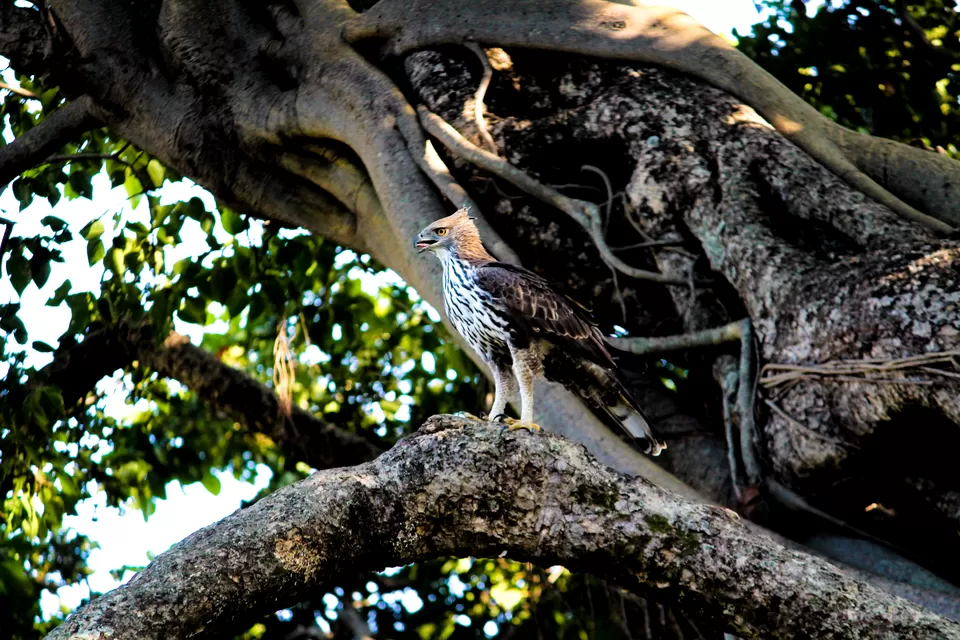


The jeep exited the park and I had to get down and sign the visitor's book where I had to mention any record of sightings of tigers. Mr. Singh got down at the check post and shook my hand, bidding me farewell. I could not thank him enough for his amazing guidance and tour. He, I must mention is a very hospitable and courteous person with a great knowledge in Nature, Forest and Wildlife. Saying farewell to him, and shaking hands with other forest guards, I climbed back into the jeep again, as Rakesh drove me towards my lodging. I looked back, as slowly and steadily, the signboard of the Park's entrance faded from view. I resolved, I will come back once more.















